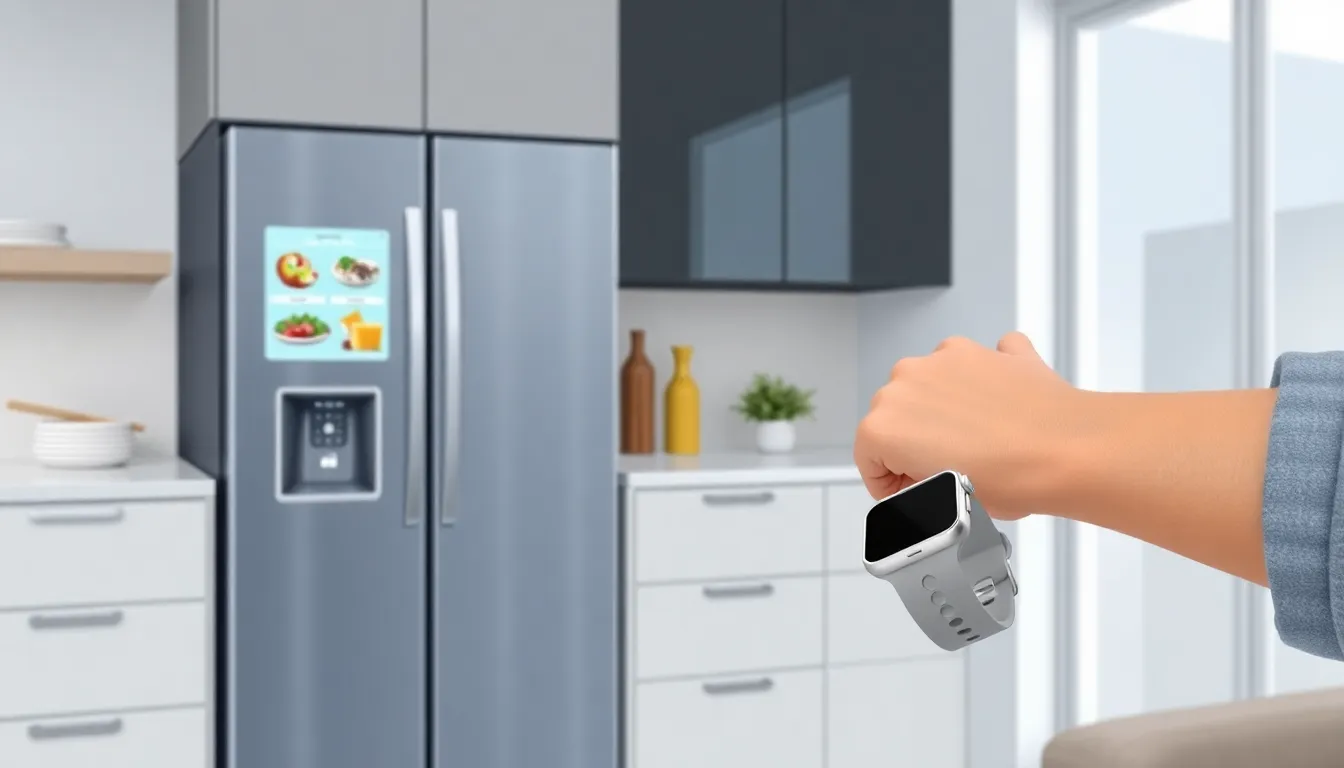In a world where technology evolves faster than a cat meme goes viral, it’s hard to keep up with the latest gadgets and gizmos. From smartphones that fit in your pocket to smart fridges that can order groceries for you, technology is the wizardry that makes life easier and a bit more fun. But what if you could peek behind the curtain and discover how these innovations truly work?
Example of Technology
Technology evolves continuously, enriching daily life. Smartphones exemplify this advancement by integrating multiple functionalities in one device. They connect users through calls, messages, and social media applications, all while offering access to a plethora of information via the internet. Smart fridges demonstrate another innovation, allowing users to manage groceries efficiently. These appliances can monitor inventory, suggest recipes, and even generate shopping lists.
Numerous other gadgets illustrate technological progress. Wearable devices, such as fitness trackers, gather data on physical activity and health metrics. Laptops provide versatile computing solutions for work, education, and entertainment, streamlining tasks with powerful performance. Streaming devices enhance viewing experiences, simplifying access to a vast array of content through various services.
Industry advancements continue shape everyday tools. Artificial intelligence impacts software applications, delivering personalized experiences and automating repetitive tasks. Virtual reality creates immersive environments, transforming entertainment and training. Robotics improves efficiency in manufacturing and healthcare sectors, revolutionizing traditional methods.
Smart home technology integrates various devices for enhanced management and security. Systems allow remote control of lighting, temperature, and security features, contributing to comfort and safety. Such examples showcase the widespread influence technology has on lifestyle, fostering convenience and productivity across multiple domains.
Key Features of Example of Technology

Example of technology illustrates significant advancements that improve everyday life. Their characteristics reflect convenience, efficiency, and versatility.
Benefits of Example of Technology
Enhanced productivity describes one of the profound advantages. Users experience streamlined processes whether accessing information rapidly or automating household tasks. Informative interfaces in smart fridges assist in meal planning, saving time on grocery shopping. Improved health tracking occurs with wearable devices, encouraging users to adopt healthier lifestyles. Customizable features often allow personalization, making technology more relevant to individual needs. Increased connectivity fosters communication, maintaining relationships across distances. Immediate access to a wealth of information encourages learning and discovery, broadening horizons for users.
Limitations of Example of Technology
Significant costs represent a primary limitation. Initial investments in smart devices may deter some consumers, especially in economically constrained environments. Maintenance requirements often necessitate ongoing expenses, complicating ownership. Security vulnerabilities can pose risks, attracting cyber threats and data breaches. Dependence on technology may lead to reduced critical thinking, as users rely on automated solutions. Compatibility issues with existing systems might arise, creating challenges when integrating new technology. Finally, the rapid pace of innovation can make devices obsolete quickly, leaving consumers feeling outdated shortly after purchase.
Real-World Applications
Technology permeates various industries, showcasing its transformative power. The integration of advanced systems enhances efficiency and productivity across different sectors.
Industry Examples
Healthcare employs wearable devices for real-time monitoring of patients’ vital signs. These devices help in early detection of health issues, allowing for timely interventions. Retail utilizes smart shelves embedded with sensors to track inventory levels automatically. Such systems minimize stock shortages and improve customer satisfaction. Manufacturing integrates robotics to streamline assembly lines, reducing labor costs and increasing precision in production processes. Education leverages online platforms to facilitate remote learning, expanding access to educational resources for students globally. Each of these applications highlights technology’s significant role in enhancing operational capabilities.
Case Studies
Amazon illustrates the application of robotics in its warehouses, where automated systems manage inventory efficiently. Automation reduces fulfillment time and improves order accuracy. Another example is the use of telehealth services during the COVID-19 pandemic, which enabled healthcare providers to diagnose and treat patients remotely, ensuring continuity of care. Tesla presents a case where AI analyzes driving data to enhance vehicle performance, contributing to safer travel. Starbucks uses data analytics to tailor customer experiences, optimizing product offerings based on buying patterns. These case studies demonstrate how technology drives innovation and improves outcomes across diverse applications.
Future Trends in Example of Technology
Emerging technologies increasingly shape the future landscape. Artificial intelligence advances further, driving innovation in software applications. Enhanced capabilities of AI systems lead to more personalized experiences in various sectors.
Internet of Things devices continue to proliferate, creating interconnected environments. Smart home systems incorporate more features, enabling users to control lighting, temperature, and security seamlessly. Smart appliances evolve, improving energy efficiency and enhancing daily conveniences.
In healthcare, telemedicine gains traction, offering patients remote consultations and monitoring. Predictive analytics become crucial for diagnosing conditions early and optimizing treatment plans. Wearable technology advances, collecting more accurate health data and improving user engagement.
Virtual reality and augmented reality applications expand into entertainment and education. These immersive experiences transform how users interact with content, creating engaging learning environments. Training programs increasingly utilize VR, promoting skill development in realistic scenarios.
Robotics innovation progresses, automating tasks across industries. Manufacturing employs robots for assembly and quality control, boosting production efficiency. Service industries integrate robotics for customer service roles, enhancing user interactions.
Sustainability drives technology trends, promoting eco-friendly solutions. Companies invest in green technologies, focusing on reducing energy consumption and waste. Electric vehicles gain popularity, reflecting a shift toward sustainable transportation options.
Blockchain technology gains wider acceptance in finance and beyond, enhancing transaction security and transparency. Industries adopt decentralized solutions, guaranteeing data integrity while reducing fraud risks.
Employing these future trends will redefine how technology impacts everyday life. They promise to enhance convenience, streamline processes, and foster an increasingly connected world.
Conclusion
The influence of technology on modern life is undeniable. From enhancing everyday tasks to revolutionizing entire industries, it shapes how people interact with the world. As advancements continue to emerge, the integration of smart devices and AI-driven solutions promises to redefine convenience and connectivity.
While challenges such as security vulnerabilities and rapid obsolescence remain, the benefits of these innovations are vast. They not only streamline processes but also improve quality of life across various sectors. Embracing these changes will be essential for individuals and businesses alike as they navigate an increasingly tech-driven landscape. The future of technology holds exciting possibilities that are sure to transform daily experiences even further.
